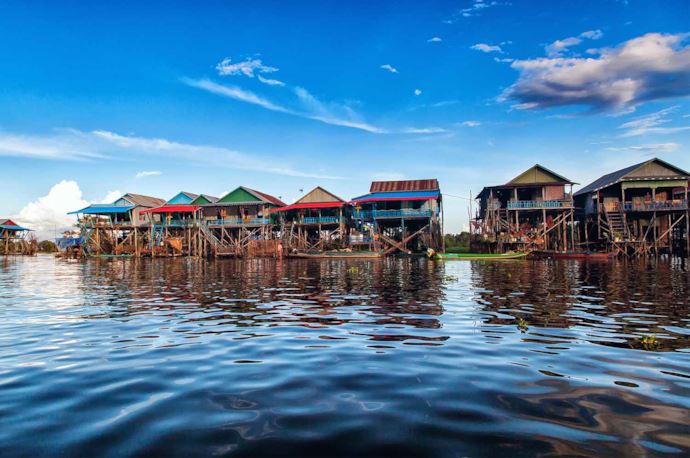
Tonlé Sap, literally large river (tonle); fresh, not salty (sap), commonly translated to “Great Lake” refers to a seasonally inundated freshwater lake, the Tonlé Sap Lake and an attached river, the 120 km (75 mi) long Tonlé Sap River, that connects the lake to the Mekong. They form the central part of a complex hydrological system, situated in the 12,876 km2 (4,971 sq mi) Cambodian floodplain covered with a mosaic of natural and agricultural habitats that the Mekong replenishes with water and sediments annually. The central plain formation is the result of millions of years of Mekong alluvial deposition and discharge. From a geological perspective, the Tonlé Sap Lake and Tonlé Sap River are a current freeze-frame representation of the slowly, but ever shifting Lower Mekong Basin. Annual fluctuation of the Mekong’s water volume, supplemented by the Asian Monsoon regime causes the unique flow reversal of the Tonle Sap River.